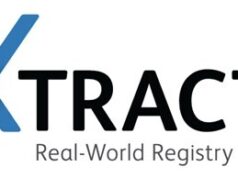 A new review of Medicare data shows a marked increase for both arterial and venous thrombectomy claims for venous thromboembolic disease filed between 2017–2022.
A new review of Medicare data shows a marked increase for both arterial and venous thrombectomy claims for venous thromboembolic disease filed between 2017–2022.
Researchers analysed a sampling of arterial and venous thrombectomy Medicare claims submitted from January 2017 to December 2022 and found a 712% increase in arterial thrombectomy for pulmonary embolism (PE) and a 137% increase in venous thrombectomy for deep vein thrombosis (DVT) over that time, according to the new paper published online in the Journal of the American College of Radiology. The study was supported by the Society of Interventional Radiology (SIR).
“The growth of arterial thrombectomy for PE is reflective of the fact we now have very safe ways of endovascular treatment for PE that we did not have 10 years ago,” said Julie Bulman, the lead author of the study and interventional radiologist at Beth Israel Deaconess Medical Center in Boston, USA.
The analysis also found that interventional radiology (IR) remains the dominant specialty using endovascular techniques to treat DVT, accounting for 34% of filed venous thrombectomy claims, followed by vascular surgery (29%) and interventional cardiology (20%). By contrast, vascular surgeons dominate the arterial thrombectomy space, which predominantly is performed for peripheral arterial disease indications, filing 41% of arterial thrombectomy claims, followed by interventional cardiology (35%) and interventional radiology (17%). However, IR arterial thrombectomy claims grew 47% over five years, while cardiology shrunk 19%, showing a change in who is performing the service. Vascular surgery showed similar growth in the venous thrombectomy space with its own 47% increase in filed claims.
“Endovascular care is truly a shared space, and it is important to know what specialties are performing these procedures so all key players can be at the table,” said Bulman, “especially when it comes to establishing standards, guidelines, or reimbursement rates.”
Bulman goes on to emphasise that, knowing which specialties are performing the treatments is also an important aspect of ensuring access to care. “These devices can be expensive, so if you are trying to figure out how to offer this service in your workplace, partnering with other endovascular specialists in your hospital can help advocate for new technologies,” she said.
Place of service was also of interest, showing that outpatient hospital facilities continue to account for the most common place of treatment at 76% for arterial thrombectomy and 78% for venous thrombectomy. While office-based labs (OBLs) are growing for both interventions, they only account for 5% of claims.
“Keeping people out of the inpatient setting is positive for the system and the patient,” said Bulman. “The move from inpatient to outpatient is in part driven by better anticoagulation techniques deployed in emergency settings allowing for patients to seek follow up care in an outpatient setting, and intervention if anticoagulation and other non-surgical treatments aren’t working”, she said.













